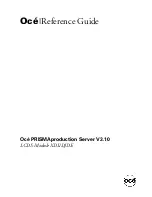
-42-
v8.6
Radio modules
8.8. 4G module
The 4G module enables the connectivity to high speed LTE, HSPA+, WCDMA cellular networks in order to make
possible the creation of the next level of worldwide compatible projects inside the new “Internet of Things” era.
This communication module is specially oriented to work with Internet servers, implementing internally several
application layer protocols, which make easier to send the information to the cloud. We can make HTTP navigation,
downloading and uploading content to a web server. We can also set secure connections using SSL certificates
and setting TCP/IP private sockets. In the same way, the FTP protocol is also available which is really useful when
your application requires handling files.
The module includes a GPS/GLONASS receiver, able to perform geolocation services using NMEA sentences,
offering information such as latitude, longitude, altitude and speed; that makes it perfect to perform tracking
applications.
The 4G module offers the maximum performance of the 4G network as it uses 2 different antennas (
diversity) for reception (MIMO DL 2x2), choosing the best received signal at any time and getting a maximum
download speed of 100 Mbps.
We chose the LE910 chipset family from Telit as it comprises the most complete 4G/LTE set of variants released
up to date. It counts with many different models, each one specifically designed for one market but all of them
with the same footprint:
•
LE910-EU (Europe/Brazil): CE, GCF, ANATEL
•
LE910-NAG (US / Canada): FCC, IC, PTCRB, AT&T approved
•
LE910-AU V2 (Australia): RCM, Telstra approved
→
[Available in Q3 2016]
Model:
LE910 (Telit)
Versions:
•
Europe/Brazil
•
America (new v2 in April 2019)
Europe/Brazil version:
•
WCDMA: 850/900/2100 MHz
•
LTE: 800/1800/2600 MHz
America version:
•
2G: 850/1900 MHz
•
WCDMA: 850/1900 MHz
•
LTE: 700/850/1700/1900 MHz
Australia version:
•
4G: 700/1800/2600 MHz
LTE (downlink):
•
Europe/Brazil version up to 100 Mbps
•
America version up to 100 Mbps
LTE (uplink):
up to 50 Mbps
TX power:
•
Europe/Brazil:
-
Class 4 (2 W, 33 dBm) @ GSM 900
-
Class 1 (1 W, 30 dBm) @ GSM 1800
-
Class E2 (0.5 W, 27 dBm) @ EDGE 900
-
Class E2 (0.4 W, 26 dBm) @ EDGE 1800
-
Class 3 (0.25 W, 24 dBm) @ UMTS
-
Class 3 (0.2 W, 23 dBm) @ LTE
















































